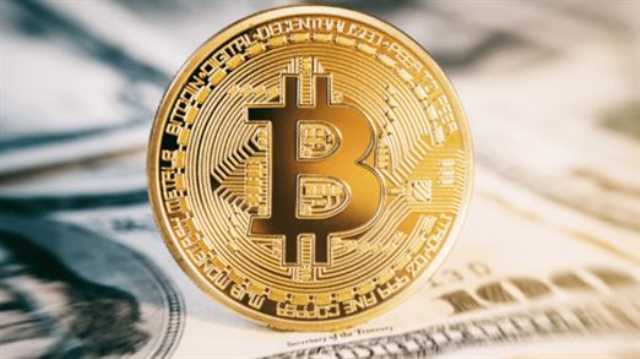
We believe everyone should be able to make financial decisions with confidence. Toshendra Sharma is one of India’s first Blockchain entrepreneurs who began working with Blockchain technology. Tosh Innovations, also known as Blockchain Council, was founded by him in 2017. The Blockchain Council brings together global Blockchain experts to provide online educational certifications in Blockchain and other deep tech fields.
- The participating nodes on the network will then determine the validity of the transactions based on the specific rules set in the network’s protocol.
- Technical innovators turn to the IBM Blockchain Platform, the leading Hyperledger Fabric platform to build, operate, govern, and grow blockchain solutions across any computing environment through Red Hat® OpenShift®.
- Supply chains are becoming more transparent and traceable thanks to Blockchain technology.
- For example, on Bitcoin’s blockchain, if you initiate a transaction using your cryptocurrency wallet—the application that provides an interface for the blockchain—it starts a sequence of events.
- Within two years, the total value of bitcoins in circulation had passed $1 billion.
- Bitcoin and other cryptocurrencies currently secure their blockchain by requiring new entries to include proof of work.
Transaction Process
(2018) IBM develops a blockchain-based banking platform with large banks like Citi and Barclays signing on. (2015) NASDAQ and San-Francisco blockchain company Chain team up to test the technology for trading shares in private companies. The dark web allows users to buy and sell illegal goods without being tracked by using the Tor Browser and make illicit purchases in Bitcoin or other cryptocurrencies. https://www.tokenexus.com/ This is in stark contrast to U.S. regulations, which require financial service providers to obtain information about their customers when they open an account. They are supposed to verify the identity of each customer and confirm that they do not appear on any list of known or suspected terrorist organizations. Transactions placed through a central authority can take up to a few days to settle.
Blockchain Timeline
The two most successful certifications provided by Blockchain Council are Certified Blockchain Expert and Certified Blockchain Developer. With the technology still in its early stages, there are a lot of possibilities for where it could go. The Home Depot is using IBM Blockchain to gain shared and trusted information on shipped and received goods, reducing vendor disputes and accelerating dispute resolution. (2020) The Bahamas becomes the world’s first country to launch its central bank digital currency.
- Each block contains stored data, as well as its own unique alphanumeric code, called a hash.
- These rules that govern a blockchain network are referred to as a protocol.
- Nodes are rewarded for their services with transaction fees and/or newly minted cryptocurrency (referred to as a block reward).
- A blockchain is somewhat similar because it is a database where information is entered and stored.
- Financial institutions operate during business hours, usually five days a week—but a blockchain works 24 hours a day, seven days a week, and 365 days a year.
Strategic Partner in Software Development
Blockchain technology is a decentralized, distributed ledger that stores the record of ownership of digital assets. Any data stored on blockchain is unable to be modified, making the technology a legitimate disruptor for industries like payments, cybersecurity and healthcare. The Blockchain is an advanced database mechanism that records data on a decentralized network consisting of several connected computers or nodes.
Blockchain for Coders or Developers
It kept a number of data records, each of which was linked to the one before it. Decentraland, for example, is a virtual world built on the Ethereum Blockchain. It allows users to buy and sell virtual land, create and monetize their own content and experiences, and interact with one another. Similarly, Rarible is an NFT marketplace where users can buy, sell, and trade unique digital assets like art, music, and collectibles. Blockchain, however, may be used for more than merely exchanging digital assets. Additionally, it can be used to establish digital identities and grant safe access to online areas.
Is Blockchain Secure?
If the resulting hash isn’t equal to or less than the target hash, a value of one is added to the nonce, a new hash is generated, and so on. The nonce rolls over about every 4.5 billion attempts (which takes less than one second) and uses another value called the extra nonce as an additional counter. This continues until a miner generates a valid hash, winning the race and receiving the reward.
In this article, we will attempt to understand what a blockchain protocol is through two exemplary blockchain protocols thus deducing its essential features. The traditional advertising industry has mostly relied on centralized platforms and intermediaries to function. They What is a Blockchain Protocol are in charge of targeting and delivering advertisements to consumers, as well as collecting and analyzing consumer data to improve ad targeting. The issue with this model is that it can be expensive for advertisers and raises concerns about data privacy and security.

As blockchain networks grow in popularity and usage, they face bottlenecks in processing transactions quickly and cost-effectively. This limitation hampers the widespread adoption of blockchain for mainstream applications, as networks struggle to handle high throughput volumes, leading to congestion and increased transaction fees. One of the most important concepts in blockchain technology is decentralization. Blockchain nodes can be any kind of electronic device that maintains copies of the chain and keeps the network functioning.
Blockchain Protocols and Their Working
All the participating nodes must agree on the validity of transactions before they’re stored on the distributed ledger. In the past decade, blockchain technology has transitioned from a pioneering promise to a valuable utility that brings meaningful benefits to its many users around the world. Blockchains such as Ethereum show how a public permissionless blockchain can be used as a highly secure and reliable distributed computer for processing conditional agreements known as smart contracts. This capability has enabled an entirely new financial ecosystem of permissionless, transparent financial services known as decentralized finance (DeFi). This project was largely responsible for introducing blockchain into our everyday vernacular, and wasn’t rivaled until 2015, with the launch of the Ethereum platform.